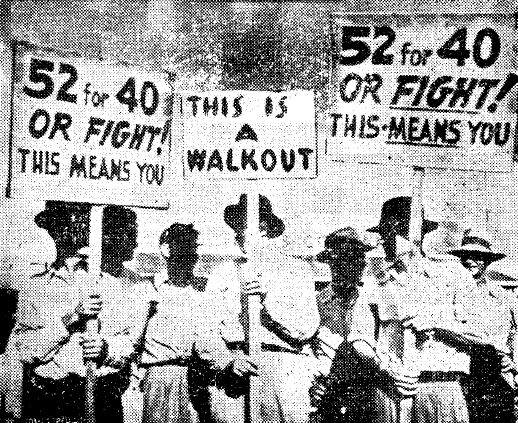
On this day in labor history, the year was 1933.
That was the day 6,000 workers at Briggs Manufacturing in Detroit walked off the job and sparked a strike wave of 15,000 auto body workers.
Briggs made auto bodies for Ford, Chrysler and Hudson in four Detroit-area plants.
Their pay and working conditions were considered among the worst in the nation, inspiring the adage, “if poison doesn’t work, try Briggs.”
Earlier in the month, workers at the Waterloo plant, under the leadership of the short-lived Automobile Workers Union, struck against company-wide wage cuts and won.
Their victory encouraged workers at the Highland Park and Mack Avenue Briggs plants to walk out over additional demands, which they joined in solidarity.
Workers demanded the recognition of shop committees and pushed back against starvation wages.
They also protested the hated “dead-time” policy, which required workers to stay on the job, unpaid, waiting for material or production lines.
They wanted an end to pay deductions for tools and a worthless health insurance policy that left some with bi-weekly pay as low as 49 cents!
Briggs quickly conceded to a wage increase and the end of “dead-time.”
But they would not budge on recognizing the union.
As the strike dragged on, strikebreaking under police escort increased, as did the redbaiting of union organizers.
Workers gained nothing more and ended their walkout in early May.
According to historian Joyce Shaw Peterson, the walkout had been the most significant auto strike up to that point.
Worker militancy and public support were impressive.
As one worker recalled, after the Ford Hunger March the year before, workers took to the picket lines, facing down fears of physical injury or even death to fight for a better life.
More Episodes
 2024-09-10
2024-09-10
 2024-09-09
2024-09-09
 2024-09-07
2024-09-07
 2024-09-06
2024-09-06
 2024-09-06
2024-09-06
 2024-09-05
2024-09-05
 2024-08-30
2024-08-30
 2024-08-28
2024-08-28
 2024-08-27
2024-08-27
 2024-08-26
2024-08-26
 2024-08-25
2024-08-25
Create your
podcast in
minutes
- Full-featured podcast site
- Unlimited storage and bandwidth
- Comprehensive podcast stats
- Distribute to Apple Podcasts, Spotify, and more
- Make money with your podcast
It is Free
- Privacy Policy
- Cookie Policy
- Terms of Use
- Consent Preferences
- Copyright © 2015-2024 Podbean.com




